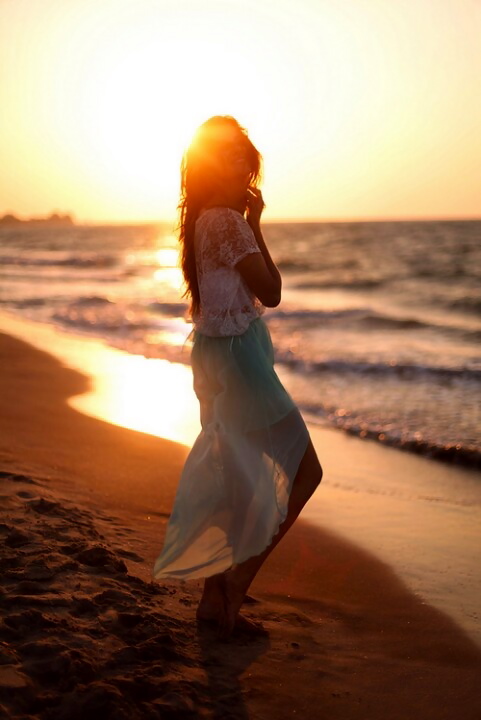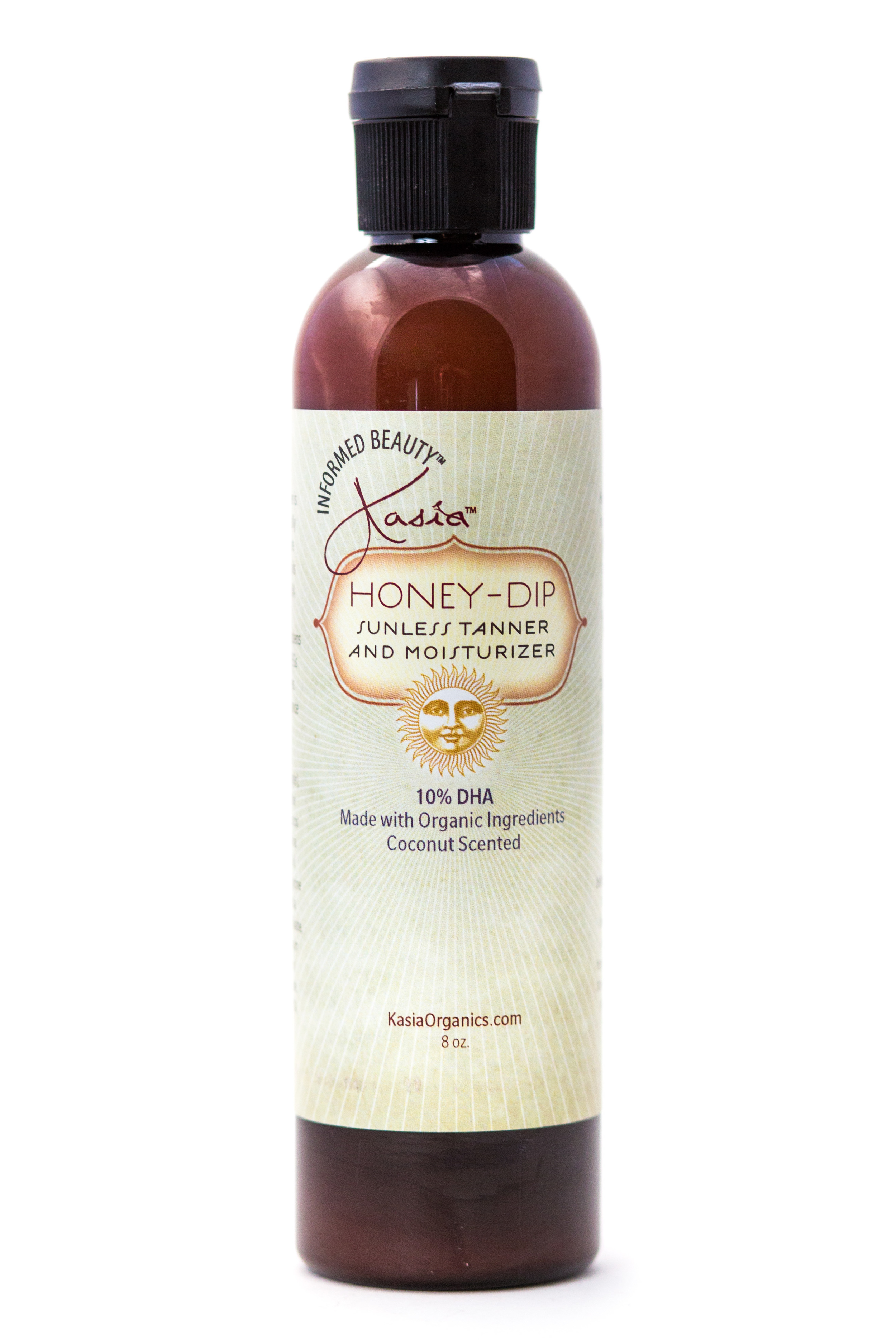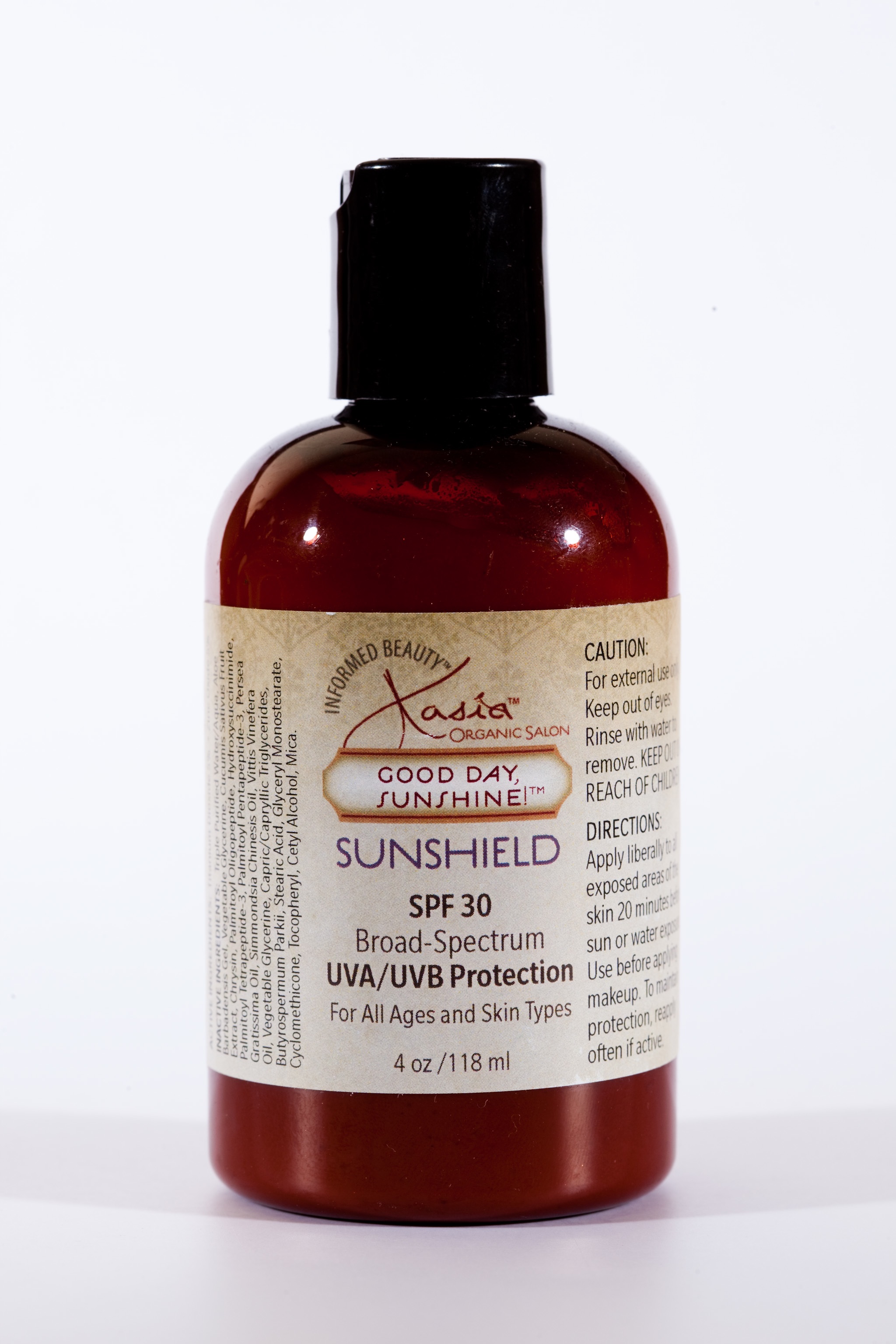Almost nothing you hear about sunscreen from traditional media channels is accurate. So here's a quick guide to the 7 most important things you need to know about sunscreen, sunlight and vitamin D:
#1) The FDA refuses to allow natural sunscreen ingredients to be used in sunblock / sunscreen products
It's true: If you create a truly natural sunscreen product using exotic botanicals with powerful sunscreen properties, you will never be able to market it as a "sunscreen" product. That's because the FDA decides what can be used as sunscreen and what can't, regardless of what really works in the real world. And there are really only two natural ingredients the FDA has allowed to be sold as sunscreen: Zinc oxide and titanium dioxide.
Any other non-chemical sunscreen ingredients, if sold as "sunscreen," would be considered mislabeled by the FDA and result in your products being confiscated... even if they offer fantastic sunscreen protection!
Not surprisingly, this whole monopoly over sunscreen chemicals is designed to protect the profits of the chemical companies while marginalizing the natural product companies which could easily formulate far better solutions. I have personally spoken to the founders of several health product companies who have figured out amazing sunscreen formulations using nothing but natural botanicals, but the FDA won't let them market their products as sunscreen products!
It's just another example of the FDA standing in the way of health innovation.
#2) Nearly all conventional sunscreen products contain cancer-causing chemicals
Read the ingredients list of any sunscreen product sold at Wal-Mart, or Walgreens, or any other mainstream store. I dare ya!
You will not be able to pronounce most of the chemicals found in the ingredients list. That's because most sunscreen products are formulated with cancer-causing fragrance chemicals, parabens, harsh alcohols, toxic chemical solvents and petroleum oils. A typical sunscreen product is actually a chemical assault on your body. That's why research shows that using sunscreen actually causes more cancer than it prevents (http://www.naturalnews.com/023317_s...).
#3) In a nation where over 70% of the population is vitamin D deficiency, sunscreen actually blocks vitamin D production
Vitamin D deficiency is perhaps the most widespread vitamin deficiency in North America. According to the research, 70 percent of whites are deficient in vitamin D, and up to 97 percent of blacks are deficient (http://www.naturalnews.com/030598_v...).
Chronic vitamin D deficiency promotes cancer (http://www.naturalnews.com/031560_v...), winter flu and infections, depression, osteoporosis and hormonal imbalances. Depending on whom you believe, vitamin D alone can prevent anywhere from 50% to nearly 80% of all cancers (http://www.naturalnews.com/021892.html).
By blocking vitamin D production in the skin, sunscreen products actually contribute to cancer-promoting nutritional deficiencies.
This doesn't mean you should never wear a sunscreen product, of course. If your skin is really pale and you're planning a day on the beach in Hawaii, you will obviously benefit from some level of sun protection using a truly natural sunscreen product. But an informed health-conscious person would try to allow their skin to achieve a natural, healthy tan (yes, a tan truly is healthy if it's combined with good nutrition, see below) through sensible exposure levels that activate vitamin D production in the skin.
#4) You can boost your internal sun resistance by changing what you eat
Here's the real secret about sun exposure that no one in conventional medicine is talking about (because, as usual, they are woefully ignorant about nutrition): You can boost your internal sunscreen by eating antioxidant-rich foods and superfoods.
The supplement astaxanthin, for example, is very well known for boosting your skin's natural resistance to sunburn. Its fat-soluble carotenoids are actually transported to skin cells where they protect those cells from UV exposure.
The more natural antioxidants you have in your diet, the more sunlight your skin will be able to handle without burning. Nearly everyone mistakenly believes that a person's sunlight burn response is purely a genetic factor. They're wrong. You can radically improve your resistance to UV exposure through radical dietary changes.
I'm a great example of this, actually, as I used to burn in just 20 - 30 minutes of sunlight when I was on a junk food diet years ago. But now, as someone who eats superfoods and high-end nutritional supplements every day, I can spend hours in the sun and will only turn slightly red (which fades a few hours later and does not result in a burn or skin peeling).
Except for one time on an all-day visit to a water park, I have not worn sunscreen in over 8 years. I spend a large amount of time in the sun, and I have absolutely no concerns whatsoever about skin cancer. My skin, most people tell me, looks significantly younger than my biological age. That's not from sunscreen; it's from nutrition. Sun exposure does not make your skin "age" if you follow a high-nutritional density diet.
#5) UV exposure alone does not cause skin cancer
It is a complete medical myth that "UV exposure causes skin cancer." This false idea is a total fabrication by the ignorant medical community (dermatologists) and the profit-driven sunscreen companies.
The truth is actually more complicated: Skin cancer can only be caused when UV exposure is combined with chronic nutritional deficiencies that create skin vulnerabilities.
To create skin cancer, in other words, you have to eat a junk food diet, avoid protective antioxidants, and then also experience excessive UV exposure. All three of those elements are required. Conventional medicine completely ignores the dietary influences and focuses entirely on just one factor: Sunscreen vs. no sunscreen. This is a one-dimensional approach to the issue that's grossly oversimplified to the point of being misleading.
The medical industry, it seems, does not want people to figure out they can literally eat their way to healthier skin. It's amazing, actually: Your skin is made entirely out of the food you eat, so how could your diet not affect your skin health? Yet no one in conventional medicine -- not the dermatologists, not the doctors and not the health regulators -- has the intellectual honesty to admit that what you eat largely determines how your skin reacts to UV exposure.
#6) Not all "natural" sunscreen products are really natural
Be careful when shopping for so-called "natural" sunscreen products. While there are some good ones out there, many are just examples of greenwashing, where they use terms like "natural" or "organic" but still contain loads of synthetic chemicals anyway.
A good guide for checking on sunscreen products is the Environmental Working Group guide (EWG) at:
http://www.ewg.org/skindeep/
Read the ingredients labels to see for yourself. Don't use any sunscreen product containing ingredients that sound like chemicals:
• Methyl...
• Propyl...
• Butyl...
• Ethyl...
• Trieth...
• Dieth...
etc.
Always buy unscented sunscreen unless for some reason you just enjoy coating your skin with artificial perfume chemicals. A typical sunscreen product is made with over a dozen cancer-causing fragrance chemicals, and they're absorbed right through your skin. Most sunscreens, when applied as directed, are really just toxic chemical baths that heavily burden your liver and can give you cancer.
#7) Many "chemical free" sunscreens are loaded with chemicals
Search Amazon.com for "chemical free natural sunscreen" and you'll see a listing for:
Jason Natural Cosmetics - Earth's Best Sun Block Chemical Free, 4 oz cream
Click on the product and you'll find a listing of its ingredients which includes: C12-15 Alkyl Benzoate, Caprylic/Capric Triglyceride, Sorbitan Isostearate, Sorbitan Sesquioleate, Ethylhexyl Palmitate, Ethyl Macadamiate, Calcium Starch Octenylsuccinate, Stearalkonium Hectorite
So how are those not chemicals? Ethylhexyl Palmitate is NOT a chemical? Who are these people kidding? The Amazon.com description (title) of this product is false and misleading. In all fairness, however, this product title looks like it was added into the Amazon.com system by the vendor and not the Jason company itself. But it's an example of how the information you see from online vendors can often be misleading.
Always read the ingredients of any sunscreen product before using it. Don't poison yourself with sunscreen!
Beware the surrounding sunscreen products
Perhaps more with sunscreen than any other personal care product, the "official" information distributed through the mainstream media is hopelessly misleading (if not downright false). Remarkably, no one in the media or the government is even willing to admit that fragrance chemicals are bad for your health. Similarly, no one is willing to admit that the chemicals you put on your skin get ABSORBED by your skin.
Without those two truths being acknowledged right up front, the rest of whatever they say about sunscreen is worthless babble. Any honest talk about sunscreen must acknowledge the simple truth that the chemicals you put on your skin get absorbed into your skin, and that most sunscreen products are made out of a chemical cocktail of cancer-causing substances.
This is the truth about sunscreen that both the sunscreen industry and the cancer industry doesn't want you to hear. It's the dirty little secret of sunscreen: The more you use, the more you CAUSE cancer in your body! (And the more money the cancer centers make "treating" your cancer with yet more deadly chemicals known as chemotherapy.)
So buyer beware. Sunscreen products are a minefield of lies, fraud and disinformation designed to keep you ignorant of the importance of sun exposure as well as the health risks associated with using cancer-causing chemicals on your skin.
Stick with truly natural sunscreen products (when needed) and try to build up a healthy tan while consuming large quantities of superfoods and antioxidants in your diet. Consider taking astaxanthin or other fat-soluble nutrients on a regular basis. Engage in daily juicing of fresh fruits and vegetables which are loaded with living nutrients. Time your sun exposure to build up a healthy tan so that you don't need sunscreen at all. Contrary to all the misinformation we've all been fed, a healthy tan is actually a good sign that you're achieving adequate vitamin D synthesis in your own skin.
Why is Kasia SUNSHIELD is part of only 8% of Sunscreens on the market, considered SAFE?
FACT:
There are few active sunscreen ingredients that effectively block both UVA and UVB rays. Kasia uses zinc oxide and titanium dioxide, which are the only ones that are both safe and effective for UVA and UVB protection and do not penetrate the skin but block or reflect the sun.
Hit List to AVOID!
Sure, avoid Parabens, but take extreme caution in avoiding sunscreens with Oxtinoxate, Octisalate, Oxybenzone or Homosalate. These chemicals are toxic and have high absorption rates through the skin. They act as either irritants, allergens, hormone disruptors or carcinogens.
 It’s officially summer —and finally warm here! The sun is out, the sky is blue and we’re wearing our favorite summer uniform of a breezy lace tank and comfy cutoffs. Other summer staples we make sure to always have on hand: sunscreen and self-tanner. Because even though that sun-kissed look makes us feel healthy and radiant, overexposure to the sun’s warm rays means damaging free radicals (read: lines and wrinkles!) and the increased chance of skin cancer.
It’s officially summer —and finally warm here! The sun is out, the sky is blue and we’re wearing our favorite summer uniform of a breezy lace tank and comfy cutoffs. Other summer staples we make sure to always have on hand: sunscreen and self-tanner. Because even though that sun-kissed look makes us feel healthy and radiant, overexposure to the sun’s warm rays means damaging free radicals (read: lines and wrinkles!) and the increased chance of skin cancer. Dip Natural Sunless Tanner and Anti-Aging Cream. Reformulated with nourishing, anti-aging ingredients and an ultra-lightweight feel, it effortlessly gives skin a healthy glow. With 10% naturally-derived DHA, Honey-Dip offers a flawless, buildable tan, and perhaps most importantly, it smells divine and won’t ever look orange or have a typical self-tanner aroma. Perfect for getting that day-at-the-beach tan without damaging your skin!
Dip Natural Sunless Tanner and Anti-Aging Cream. Reformulated with nourishing, anti-aging ingredients and an ultra-lightweight feel, it effortlessly gives skin a healthy glow. With 10% naturally-derived DHA, Honey-Dip offers a flawless, buildable tan, and perhaps most importantly, it smells divine and won’t ever look orange or have a typical self-tanner aroma. Perfect for getting that day-at-the-beach tan without damaging your skin! Within the past two years, broad spectrum sunscreens have exposed a new danger: Sunscreen manufacturers are now adding nano particles to sunscreens with titanium and zinc oxide to make application more smooth and clear (versus the traditional white effect). Unfortunately, nano particles are being added without appropriate labeling or reliable safety information, as they pose potential long-term risk to health.”
Within the past two years, broad spectrum sunscreens have exposed a new danger: Sunscreen manufacturers are now adding nano particles to sunscreens with titanium and zinc oxide to make application more smooth and clear (versus the traditional white effect). Unfortunately, nano particles are being added without appropriate labeling or reliable safety information, as they pose potential long-term risk to health.”








